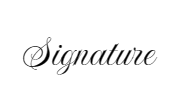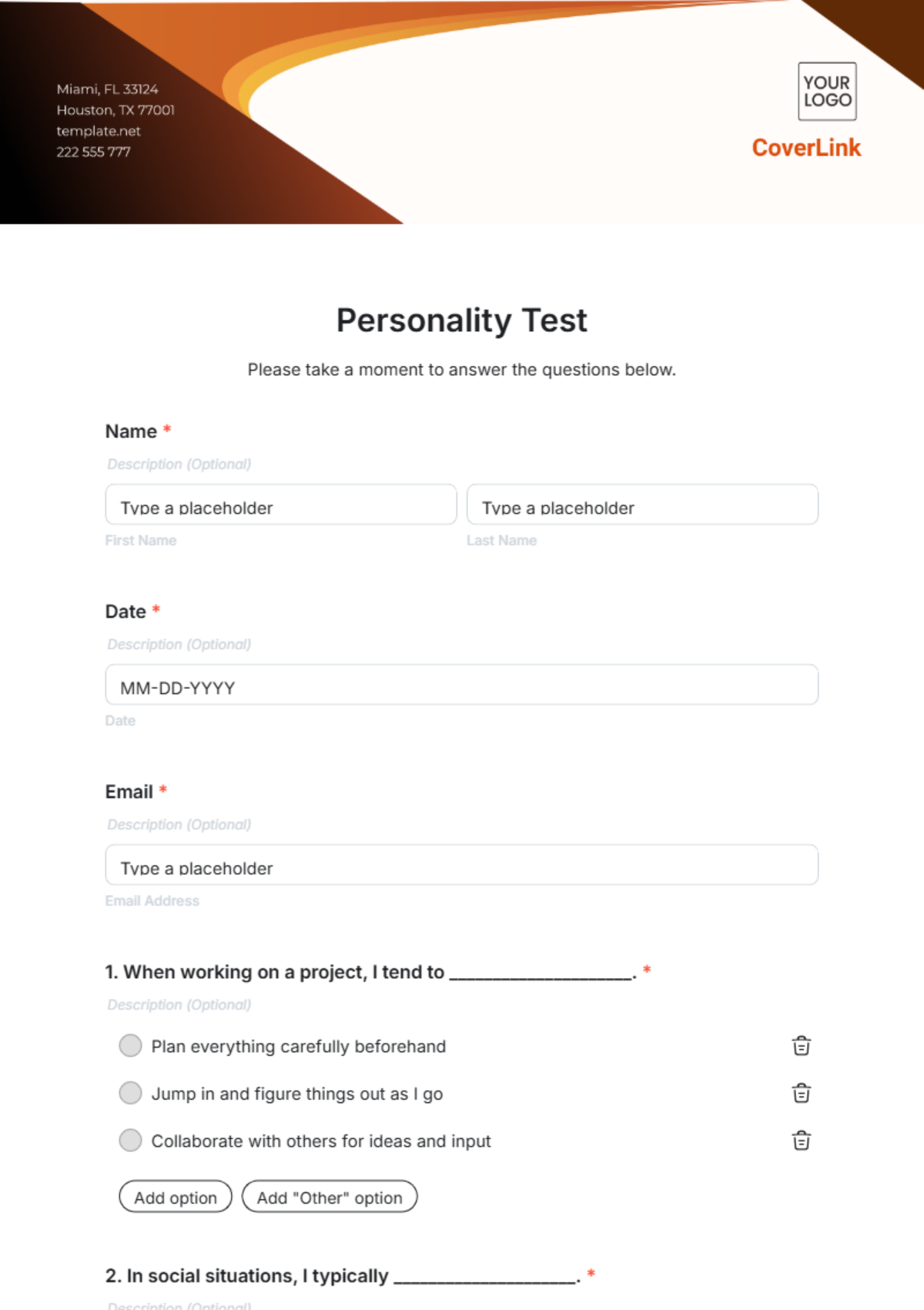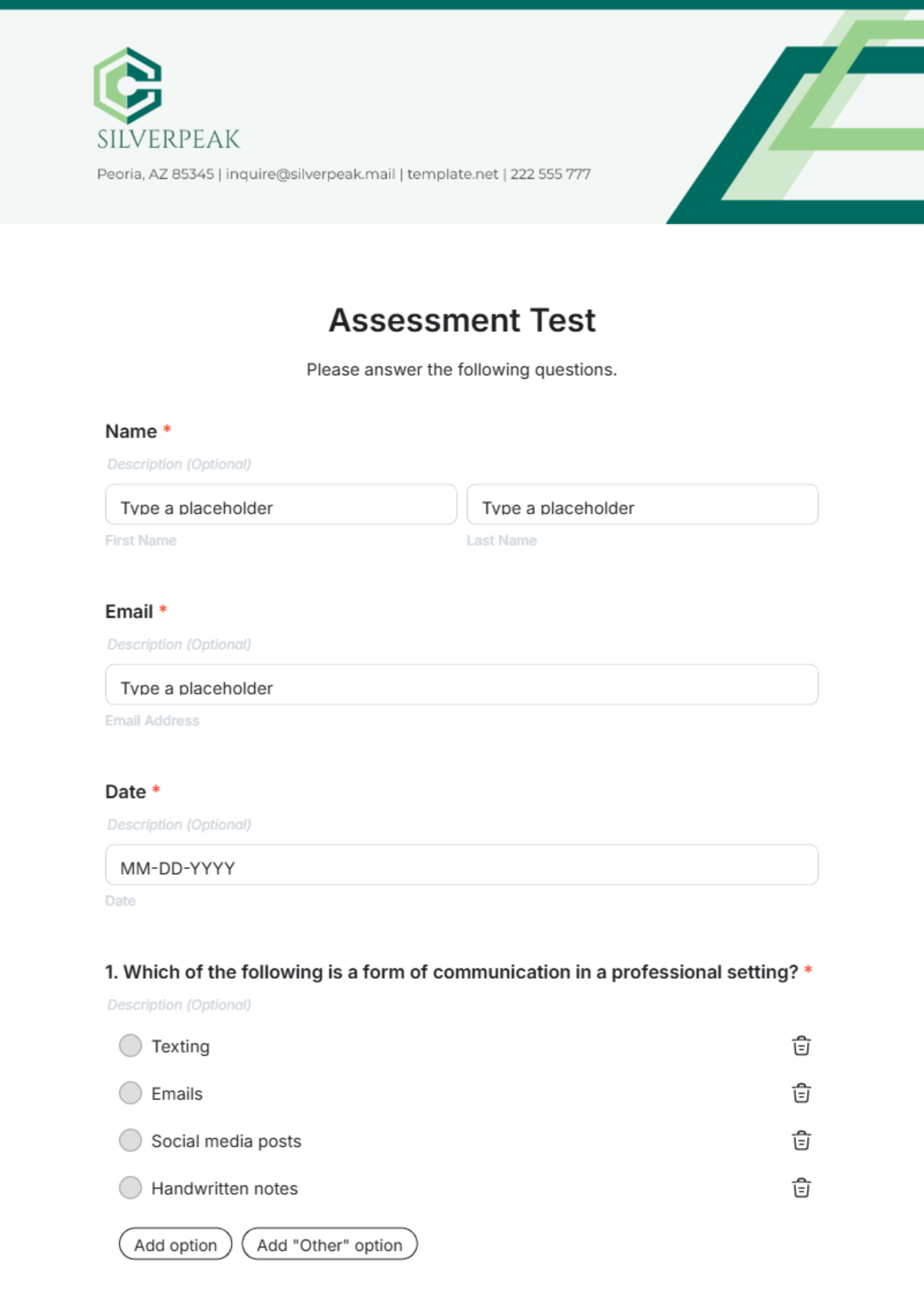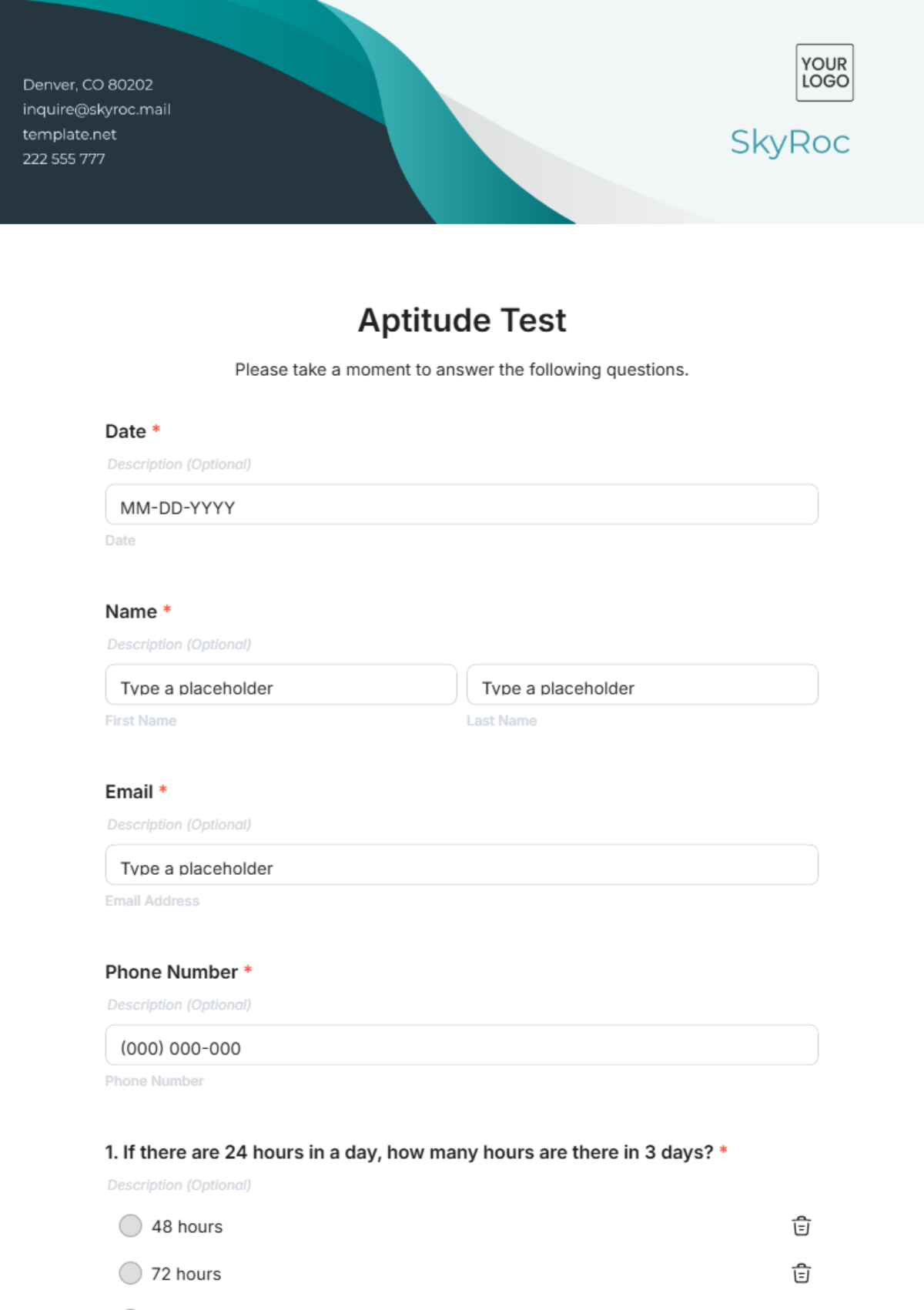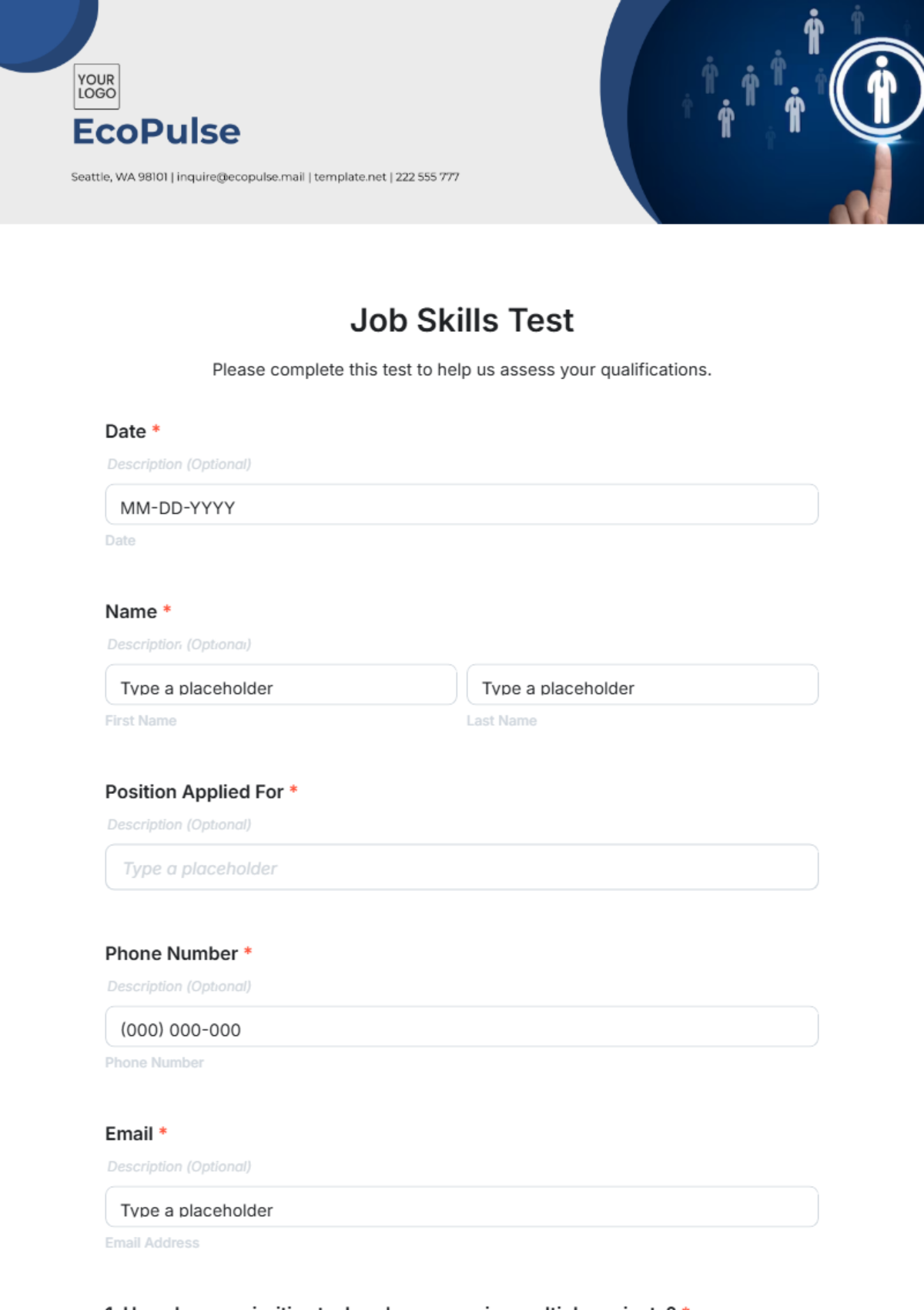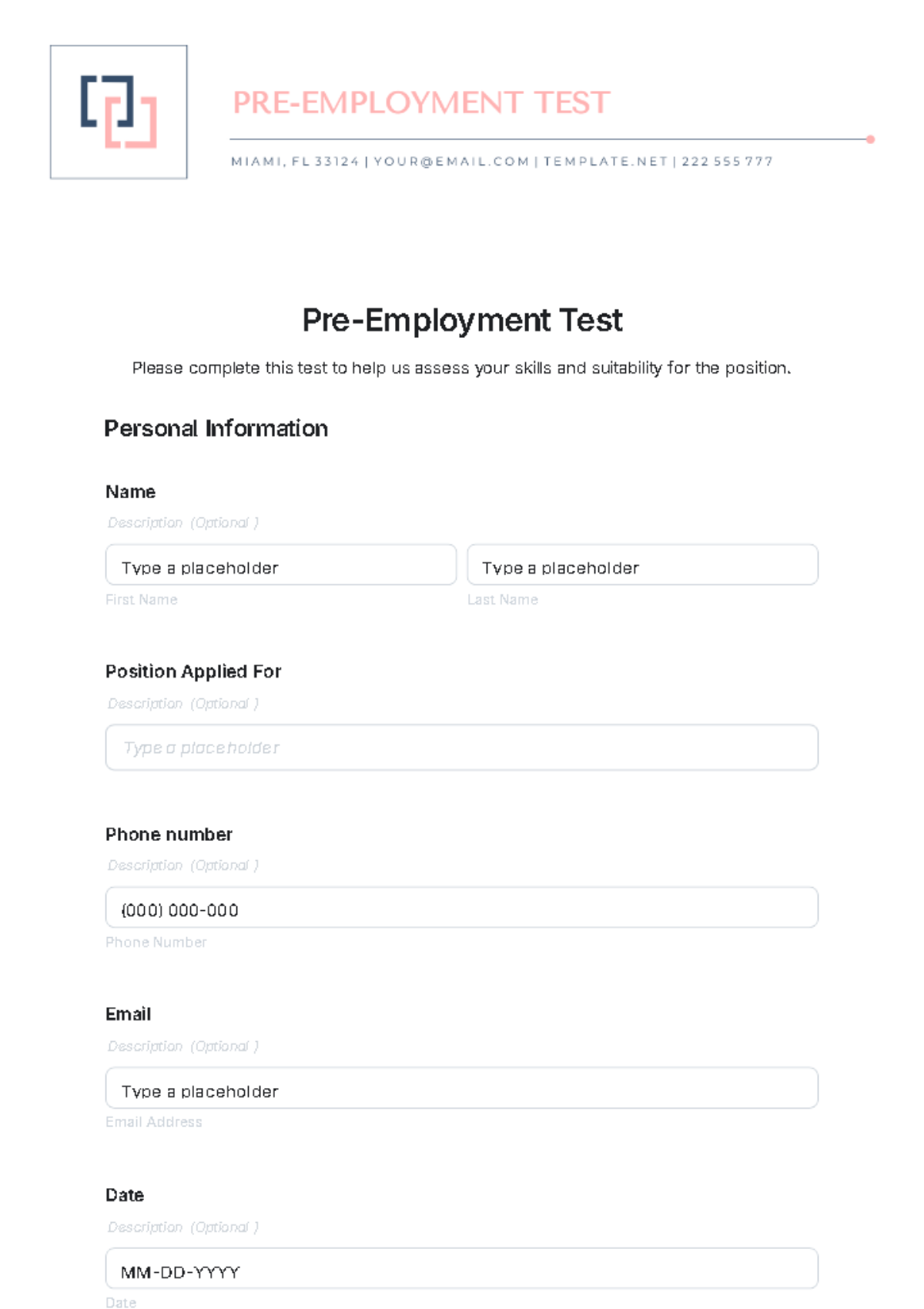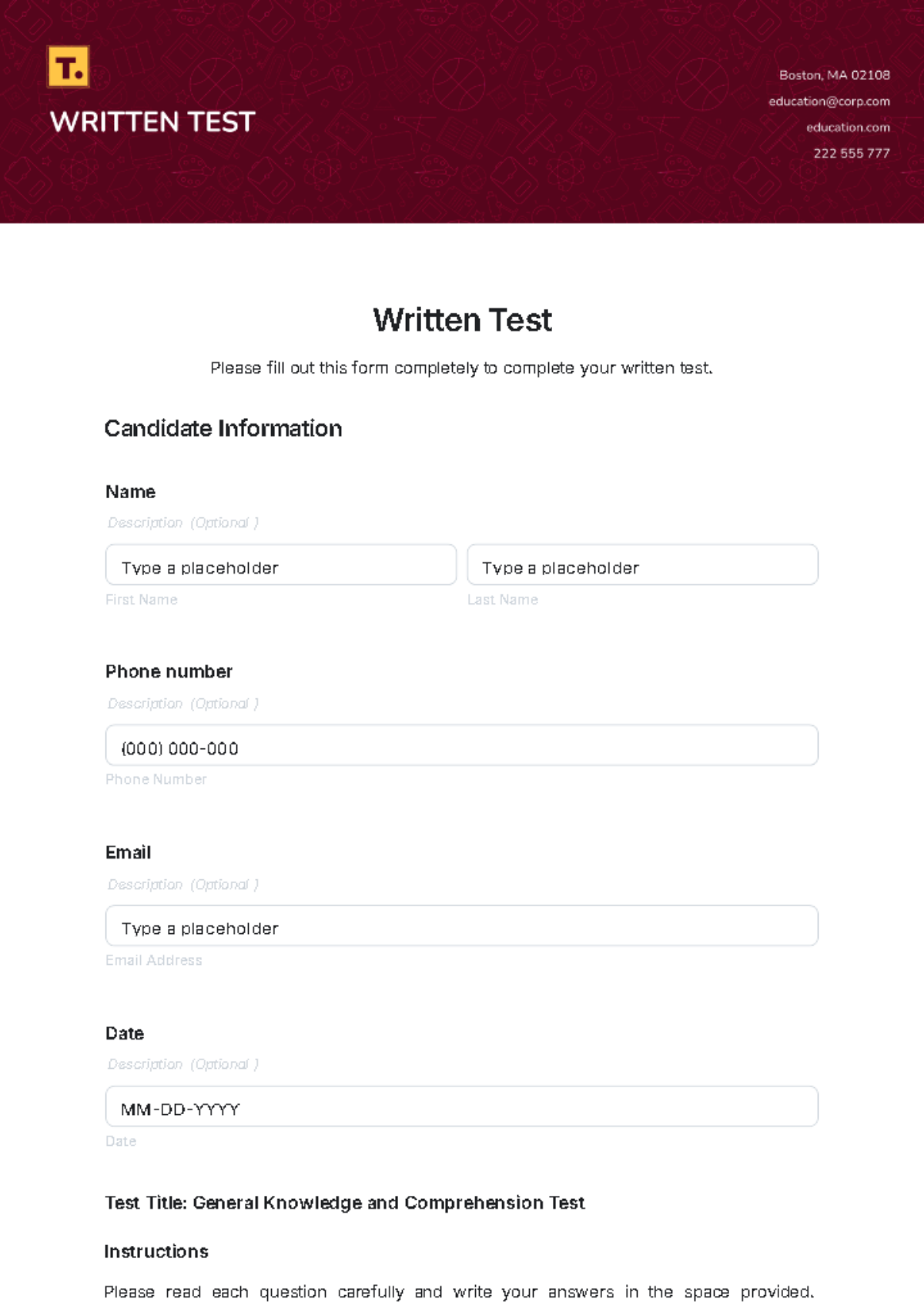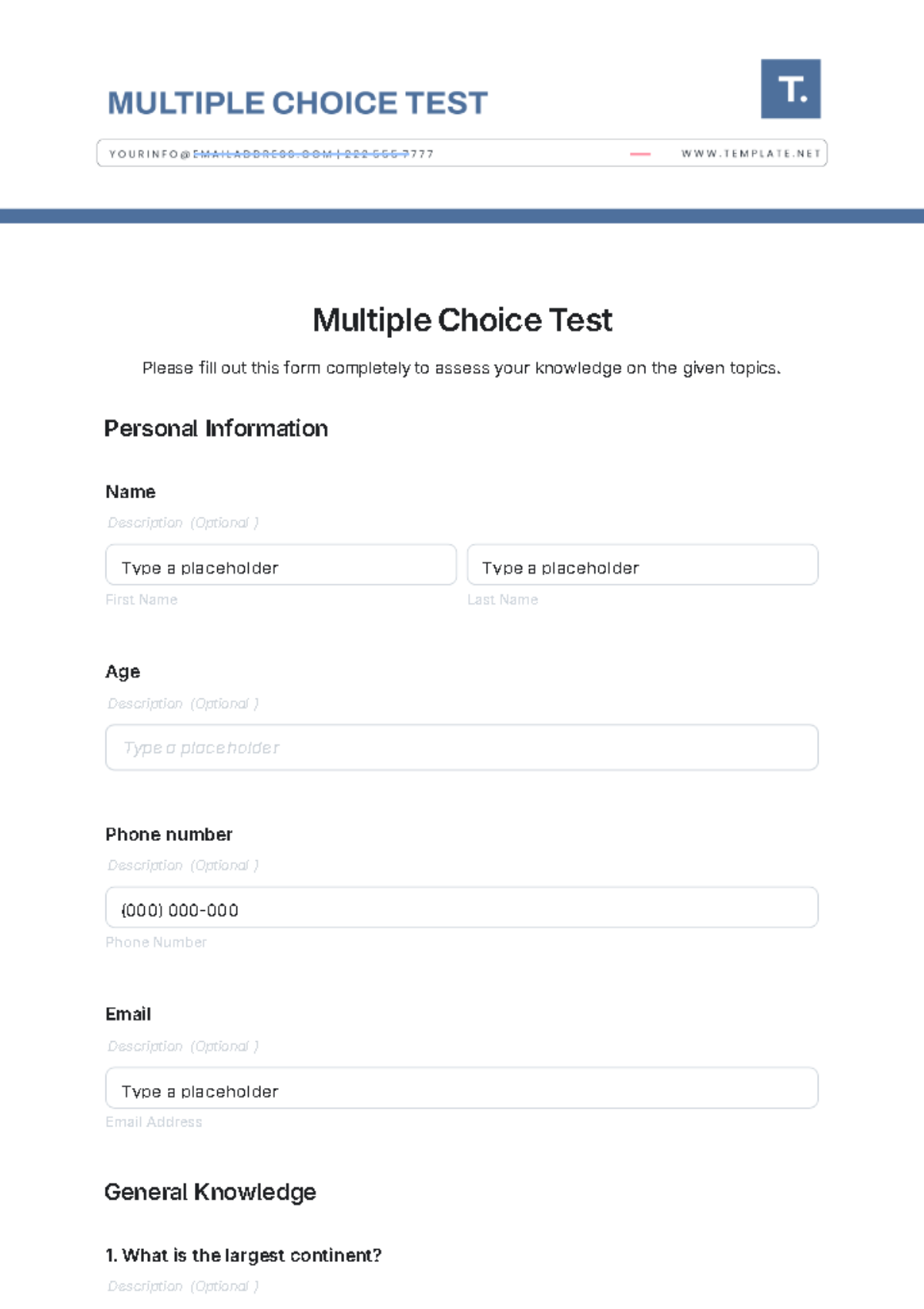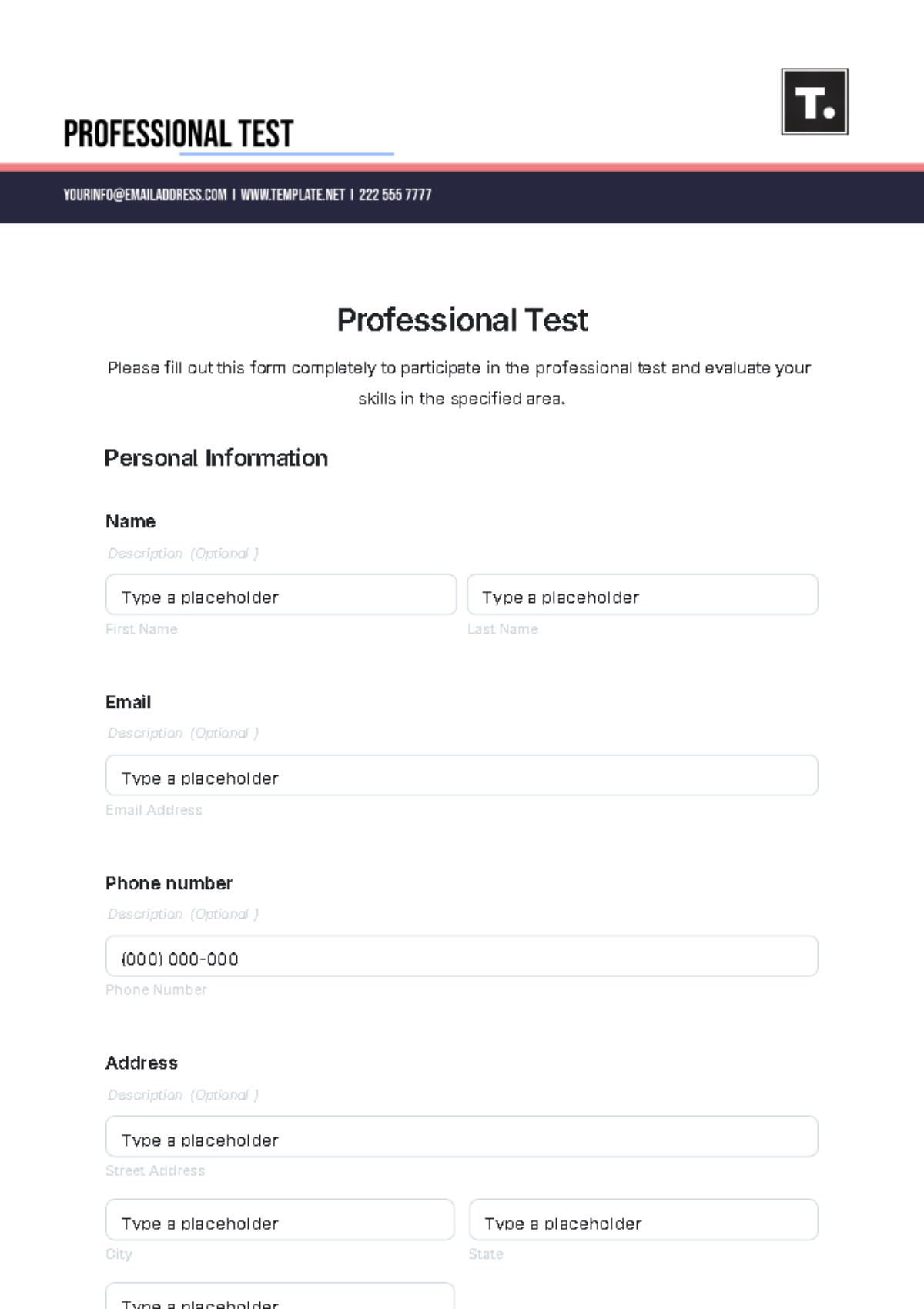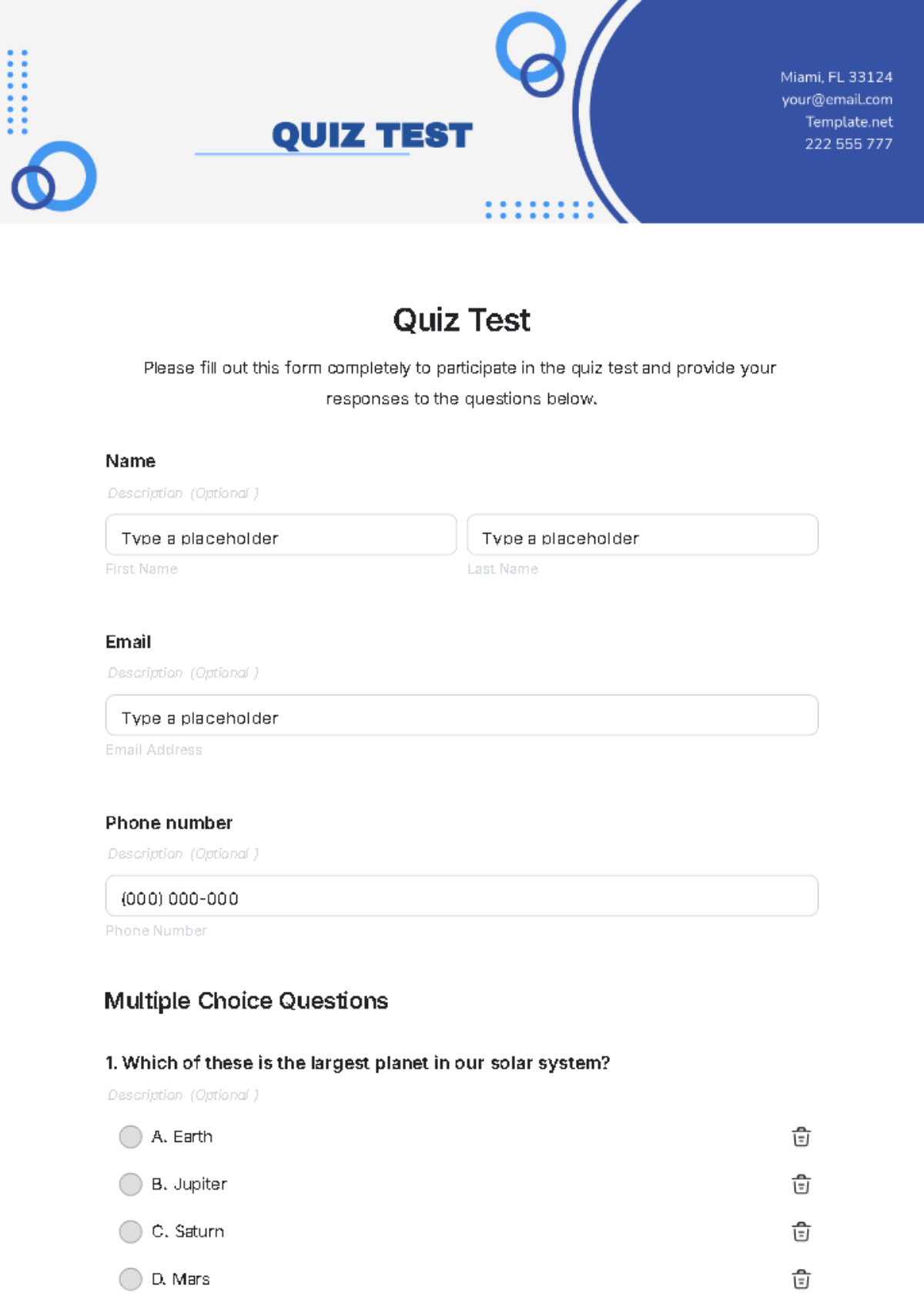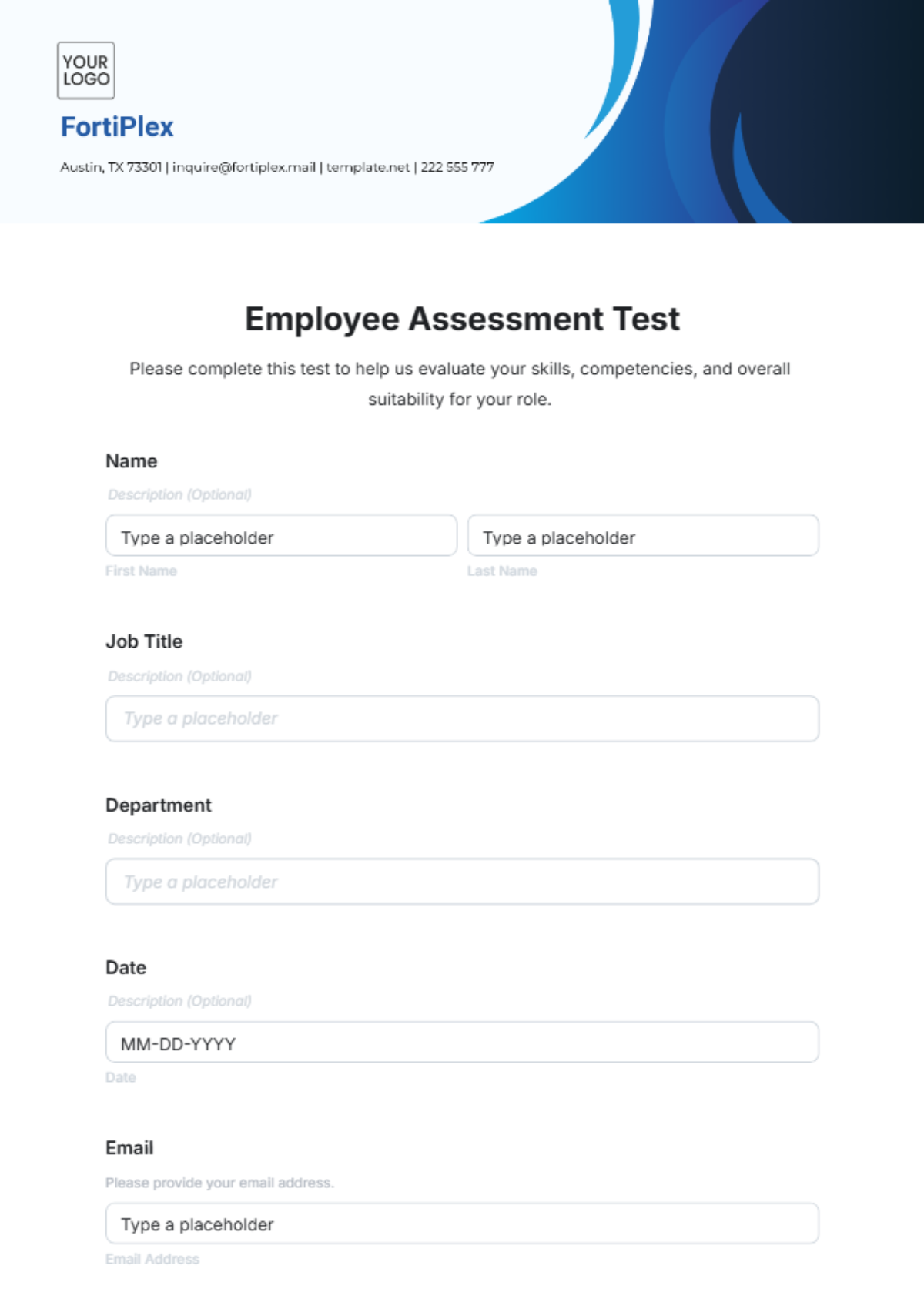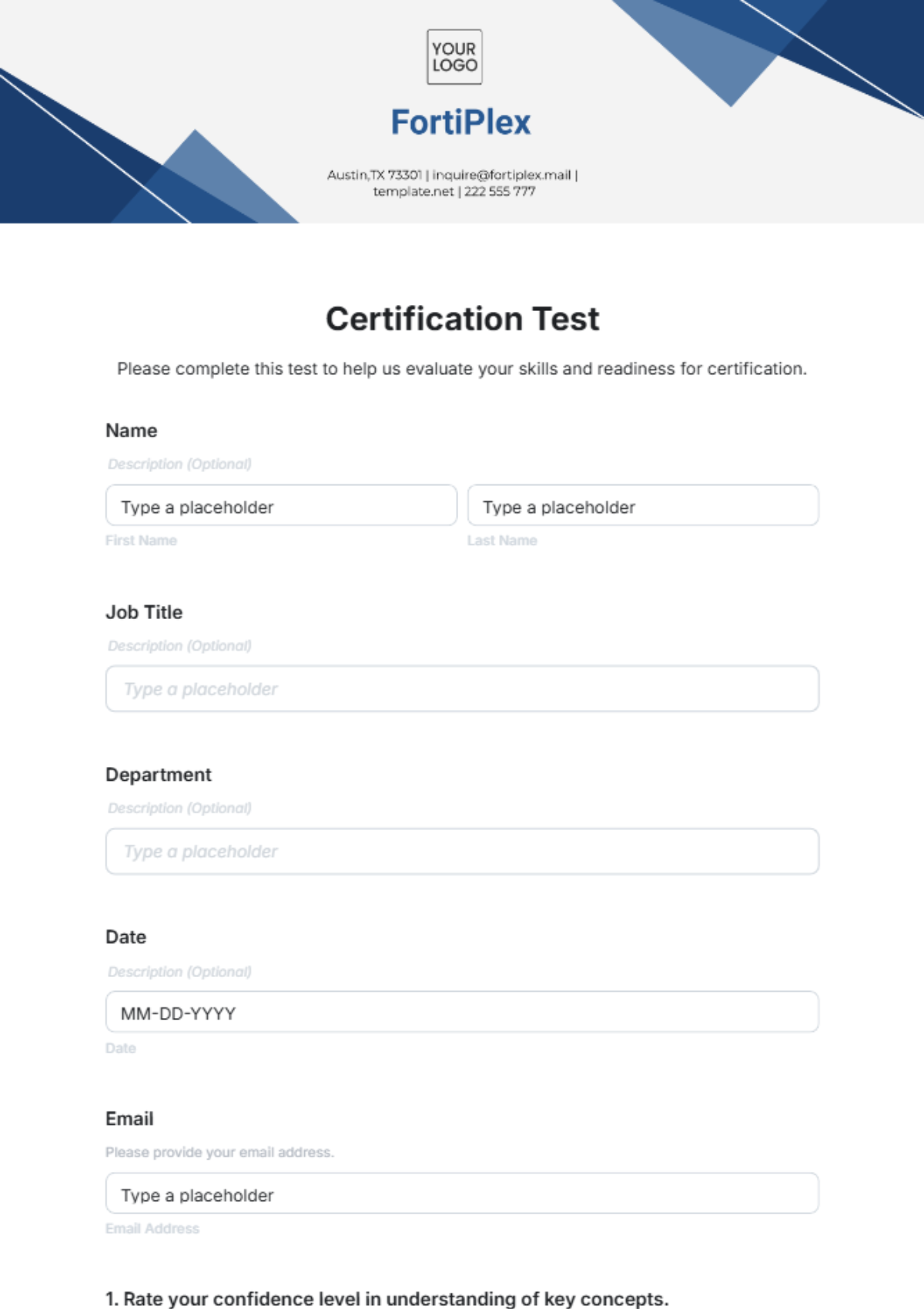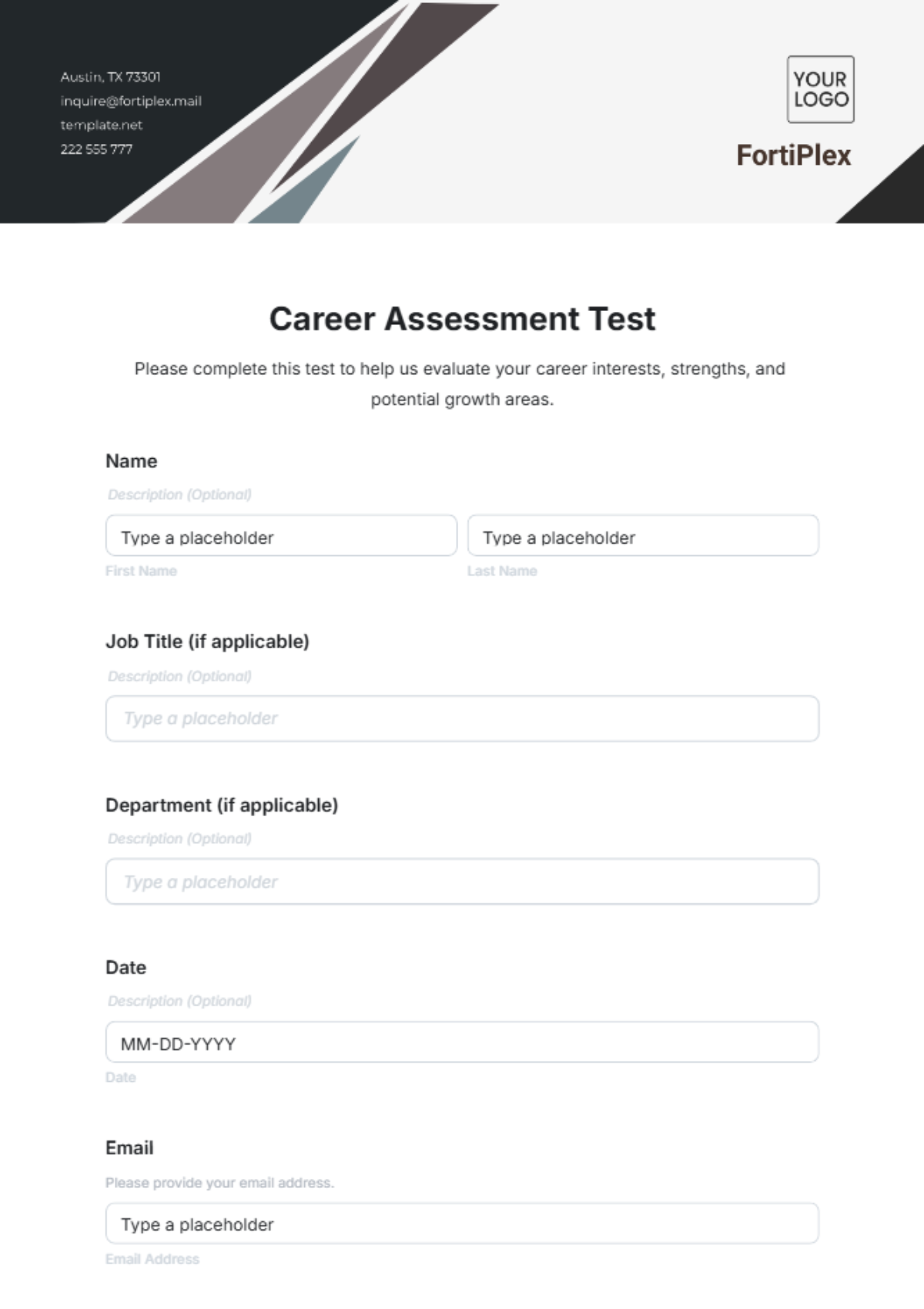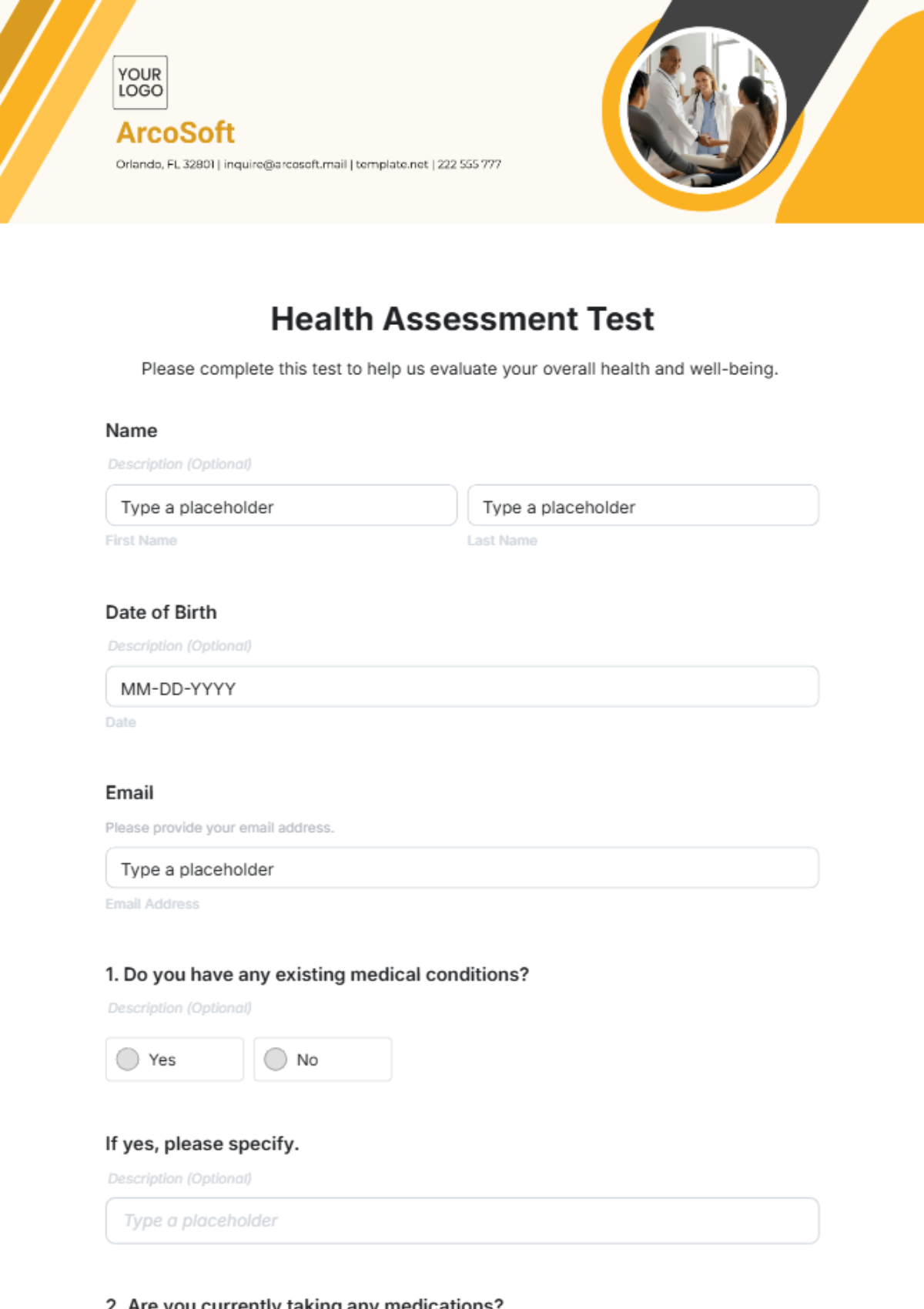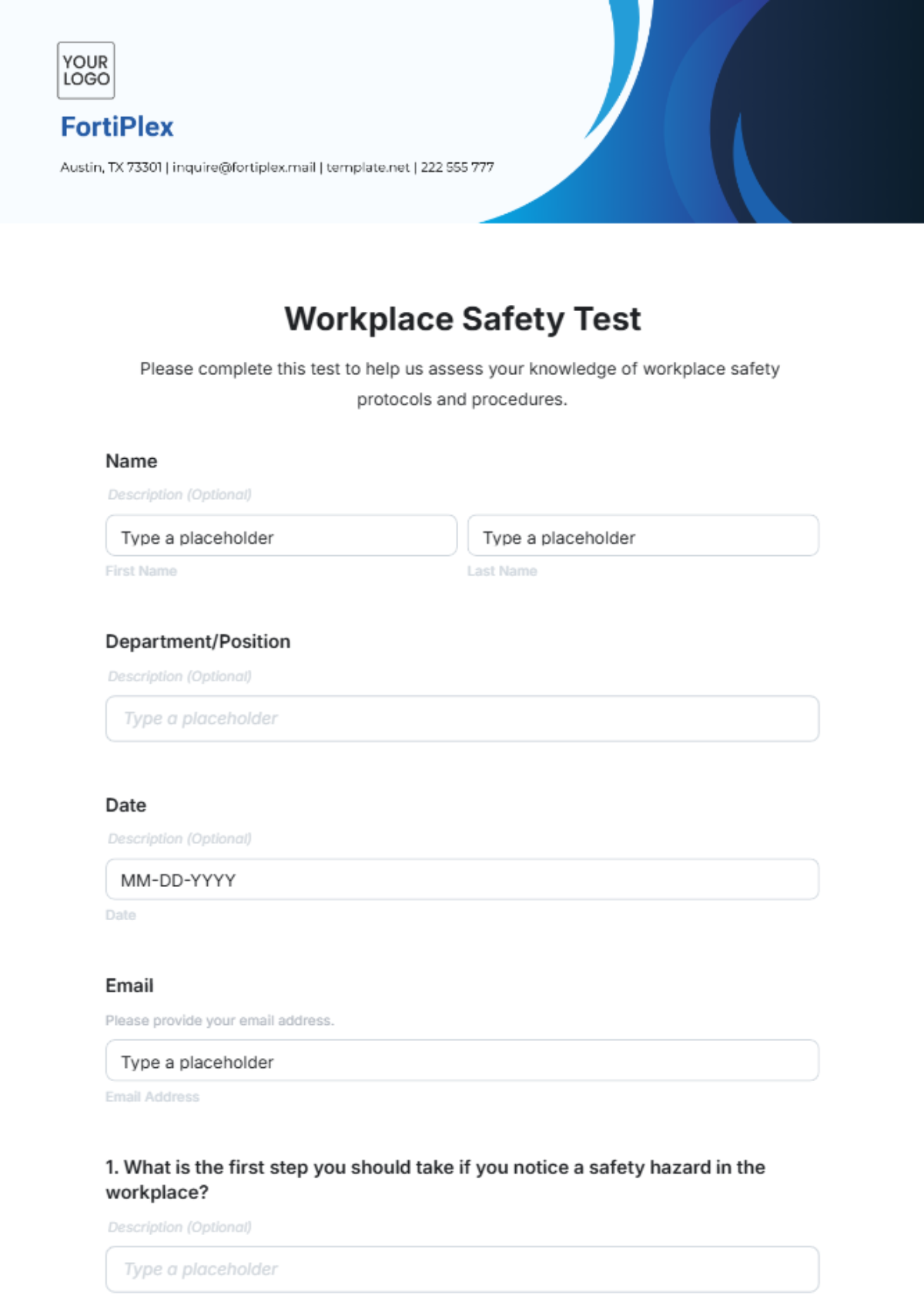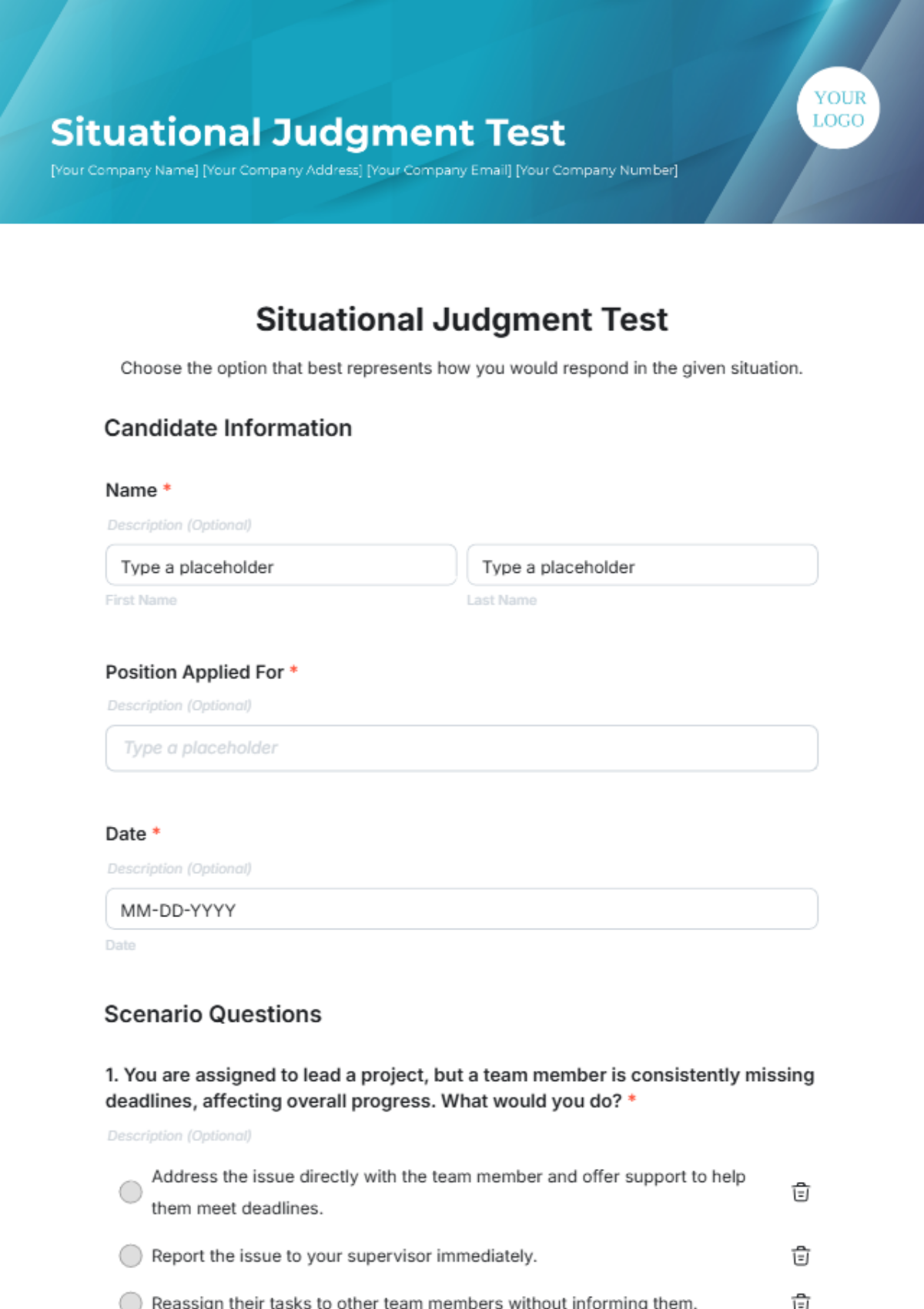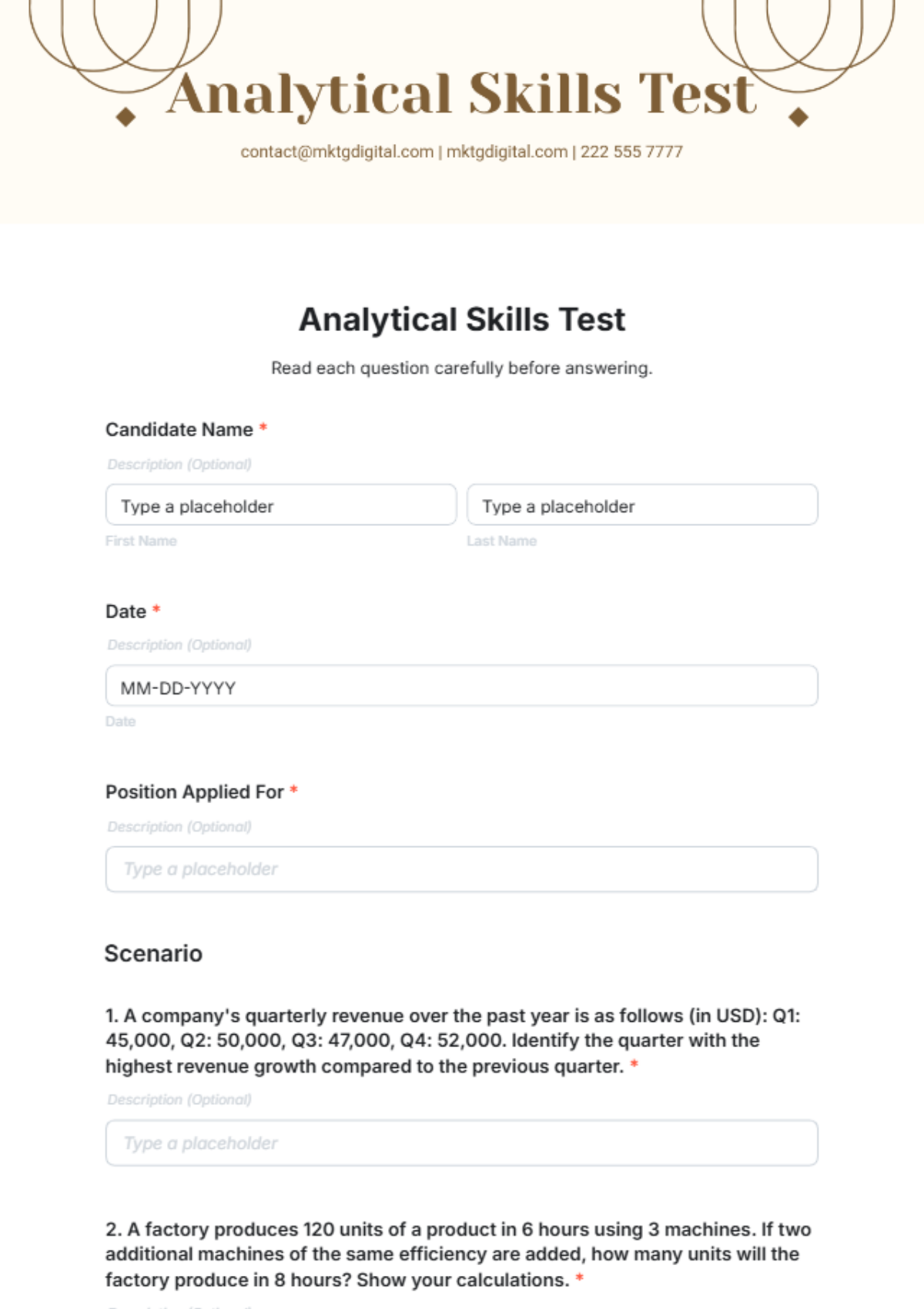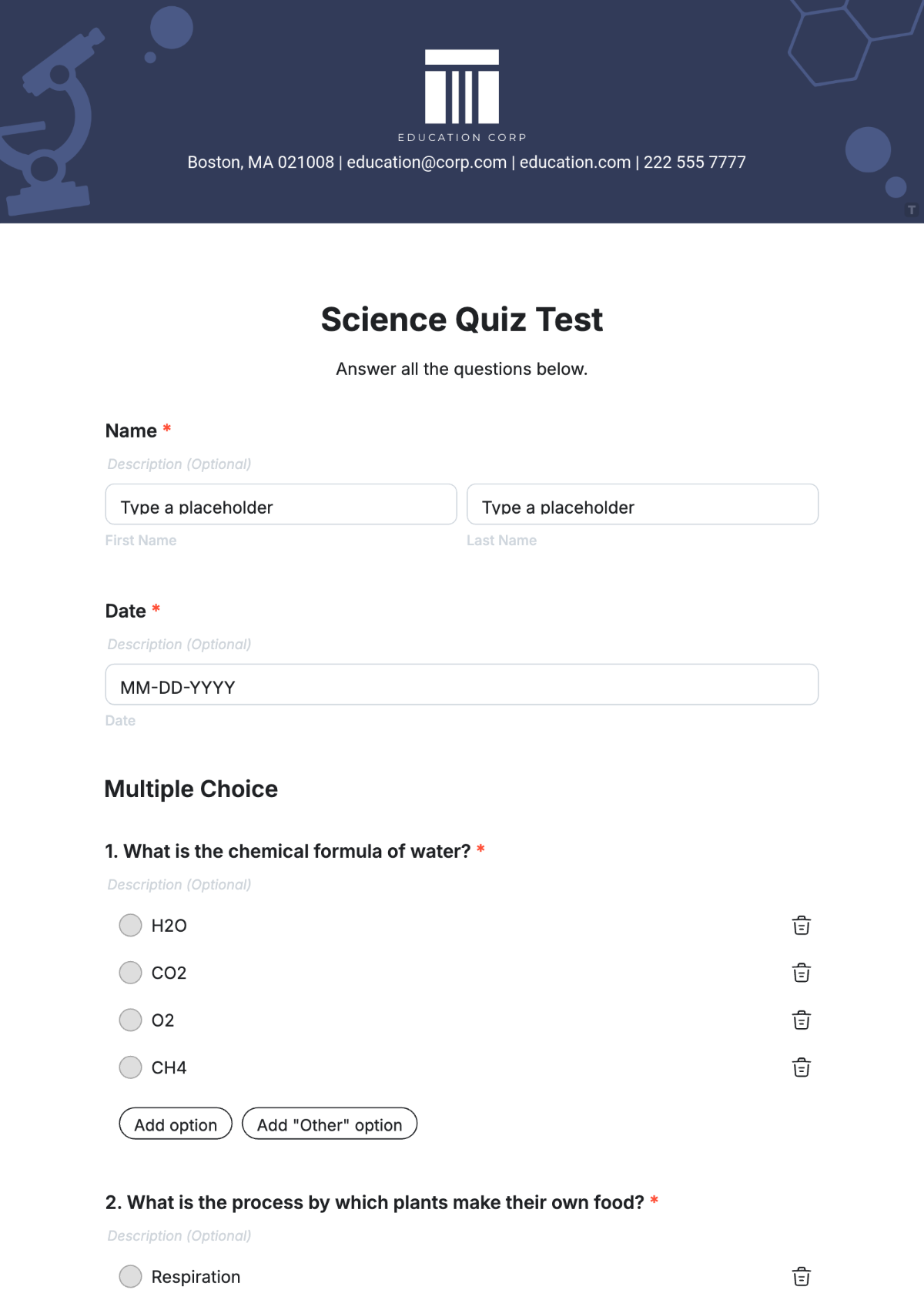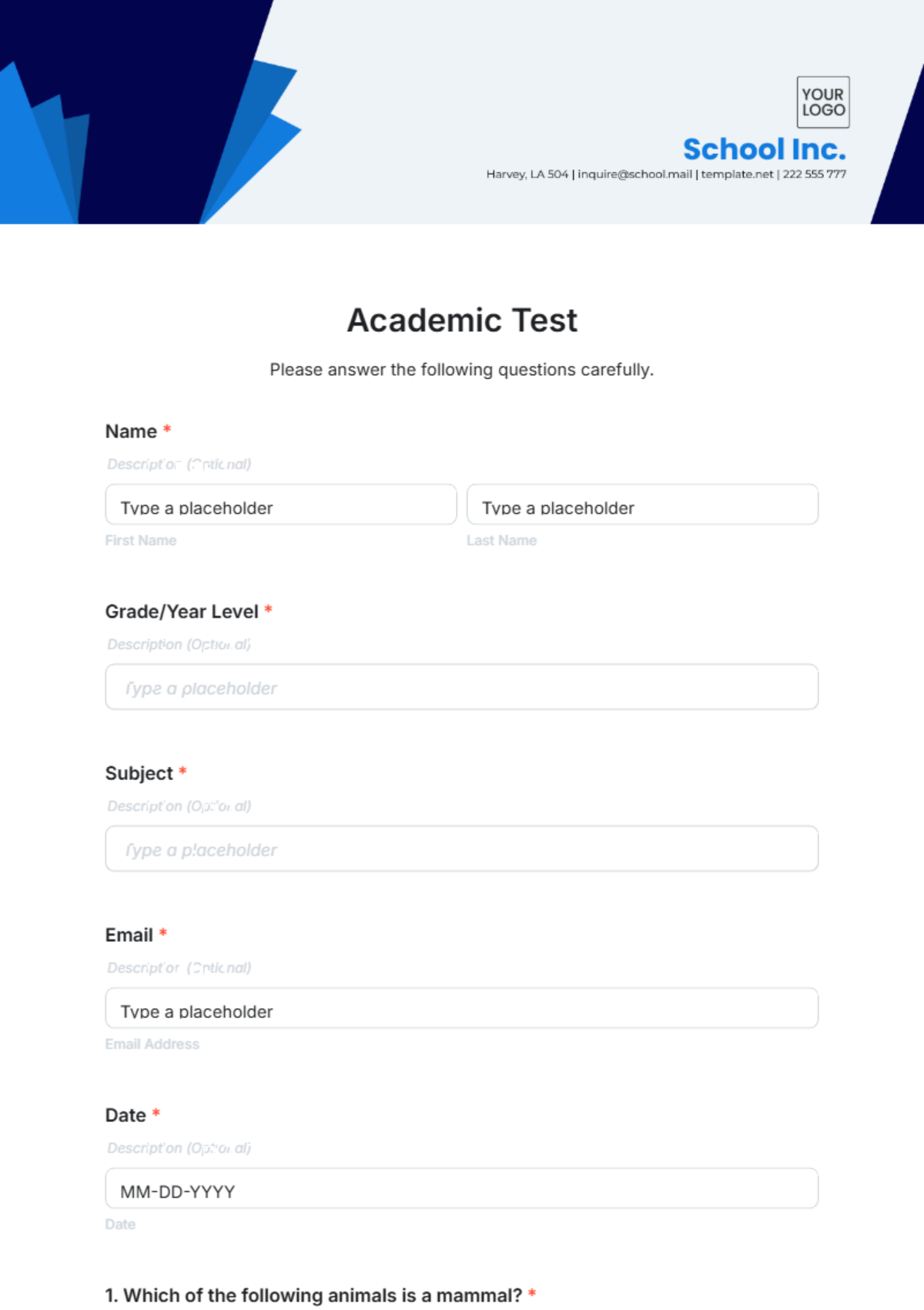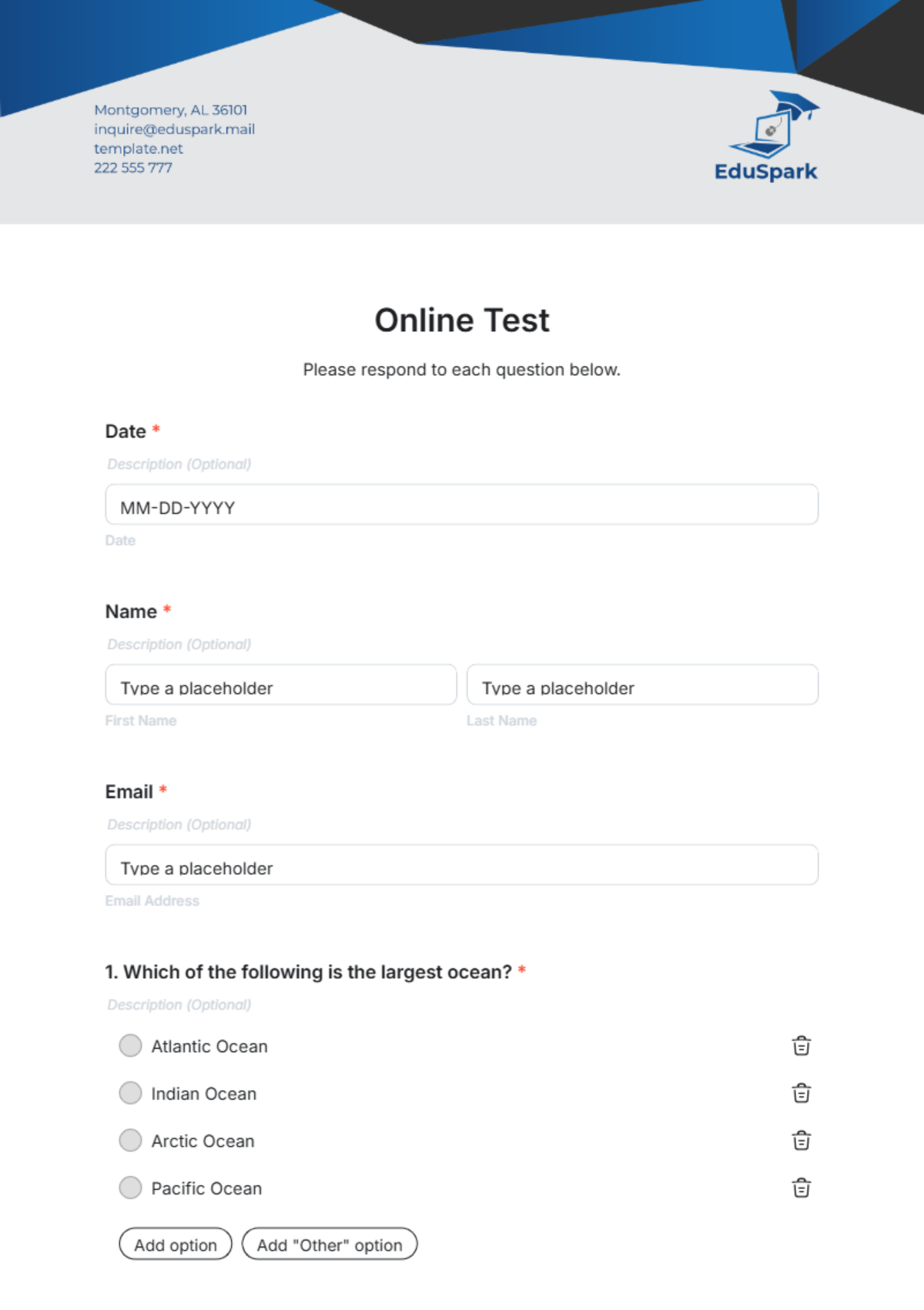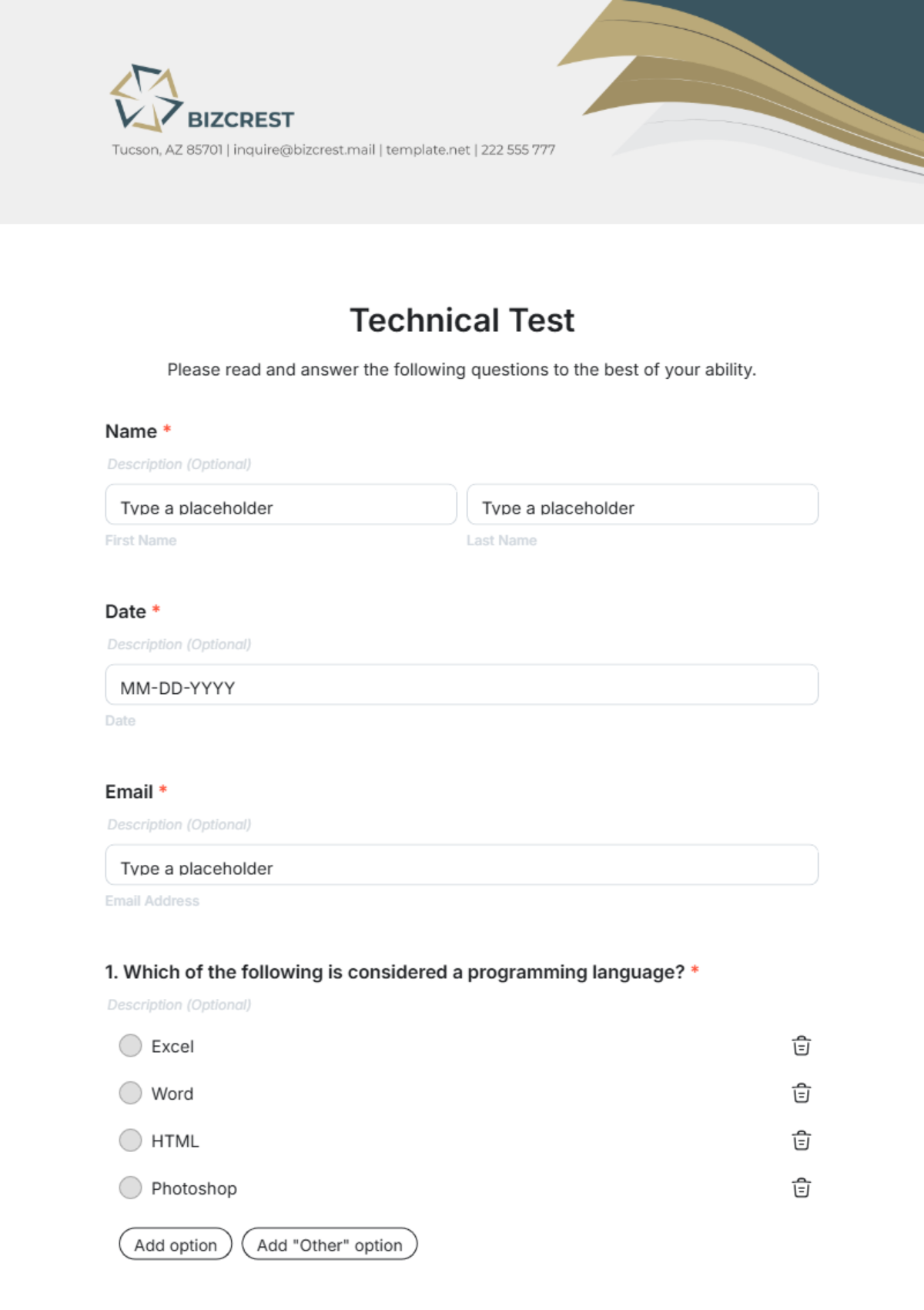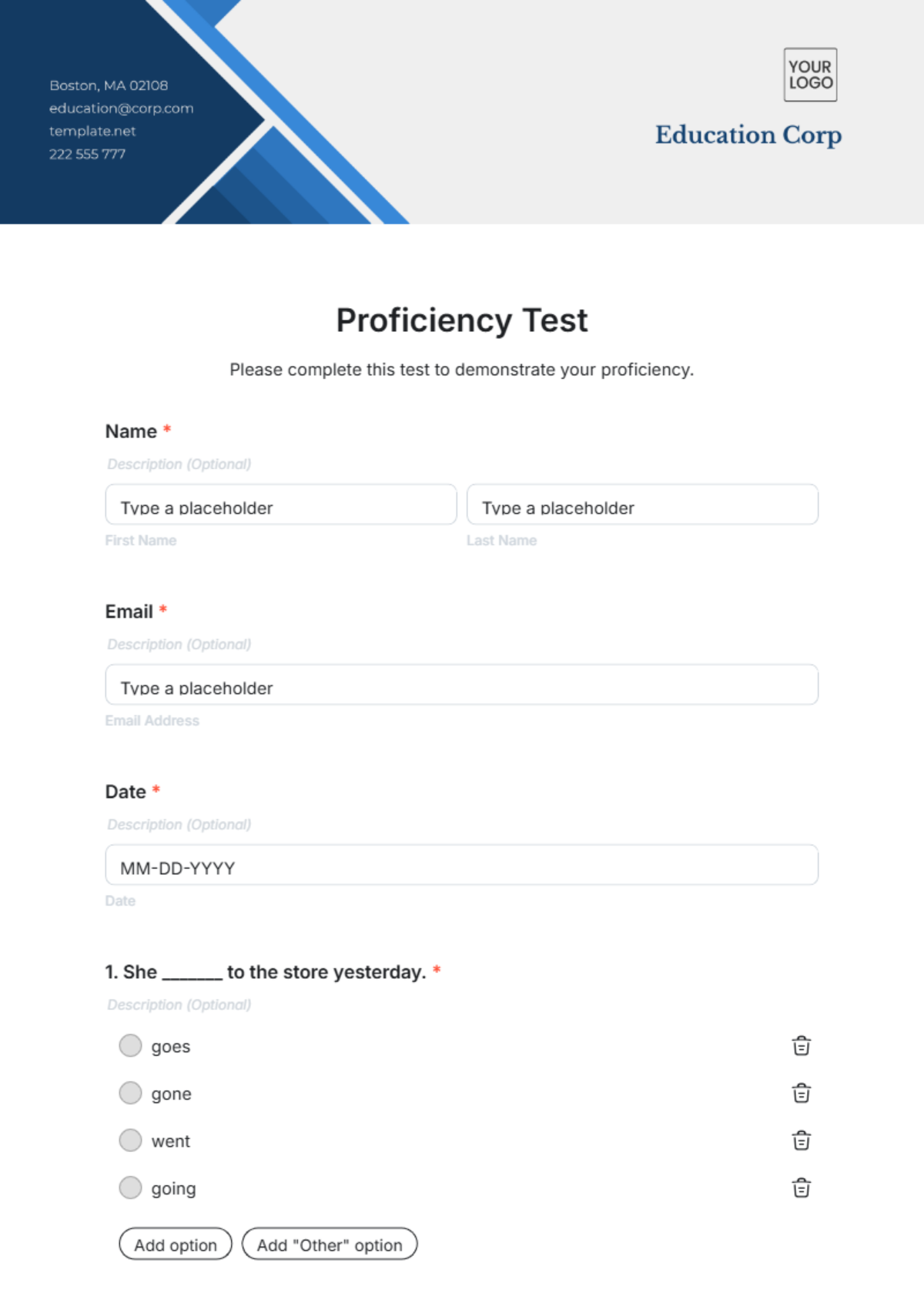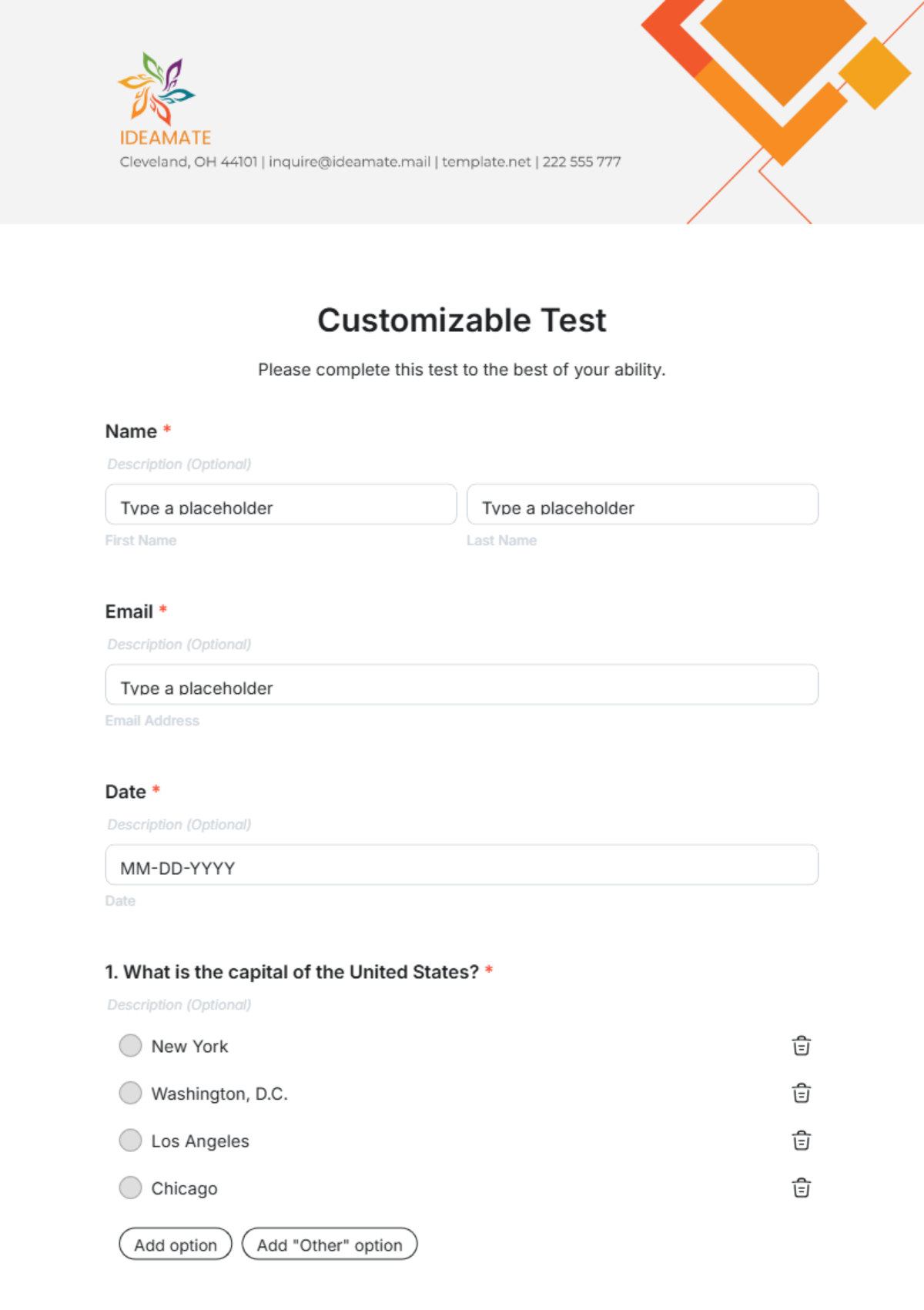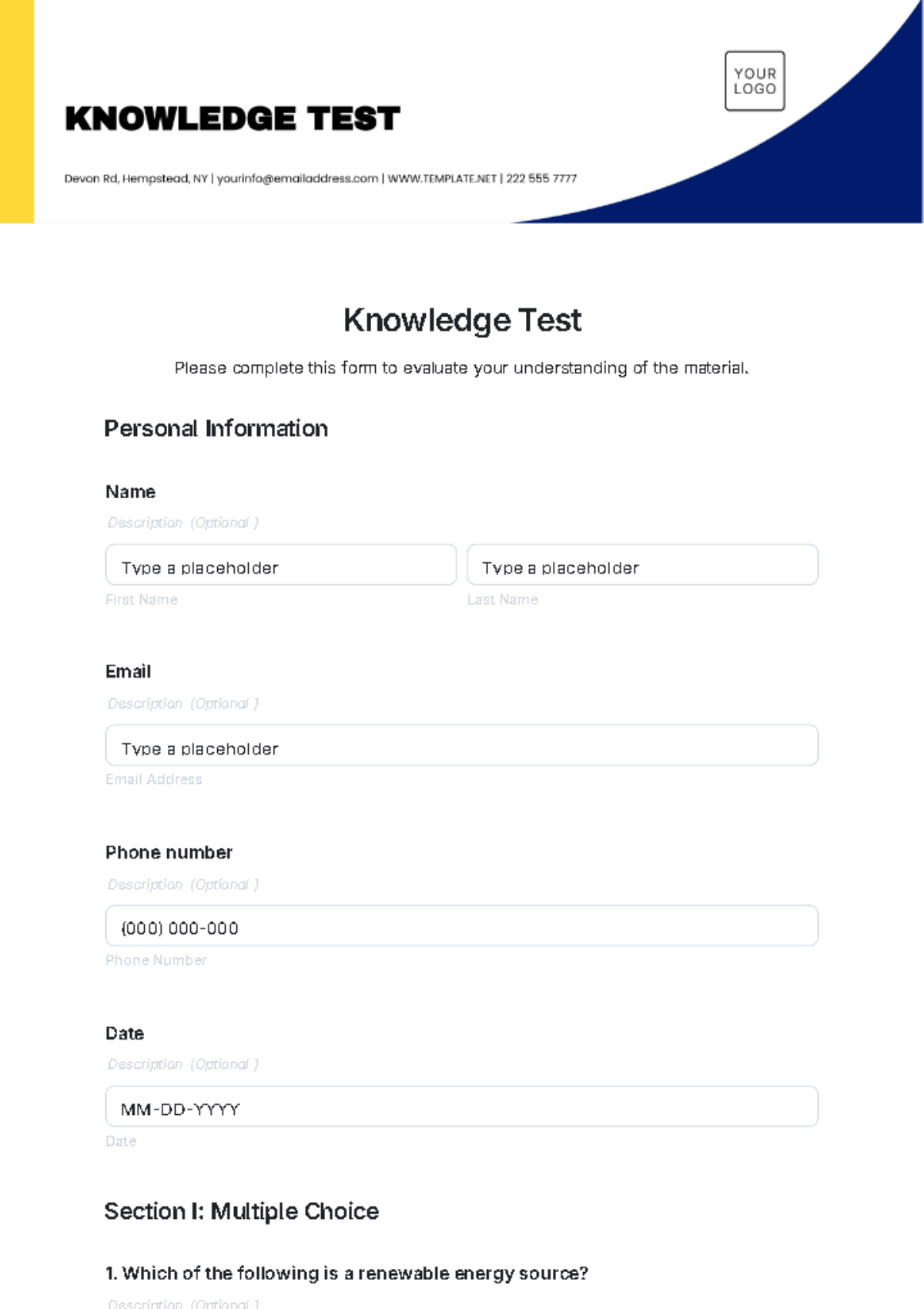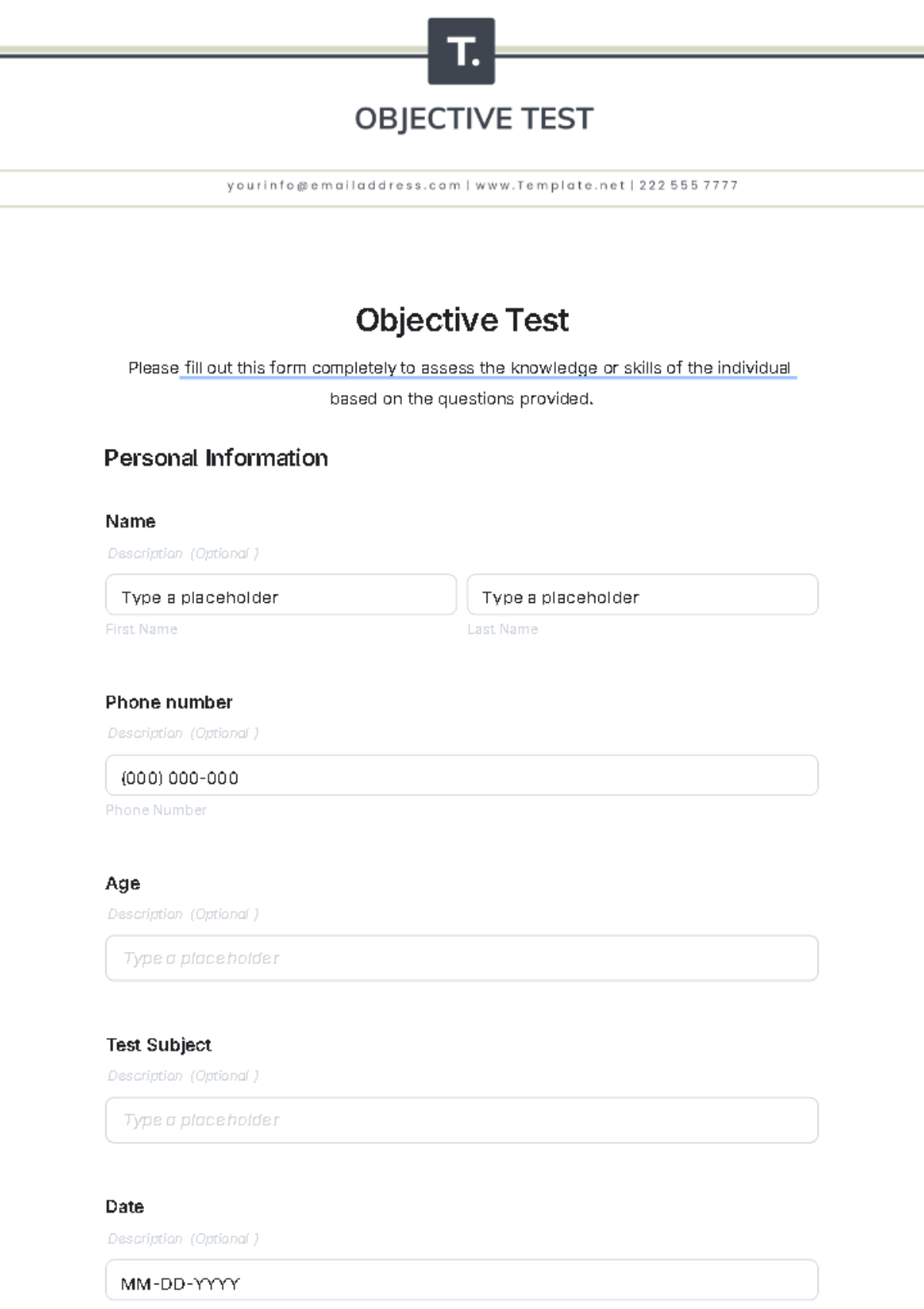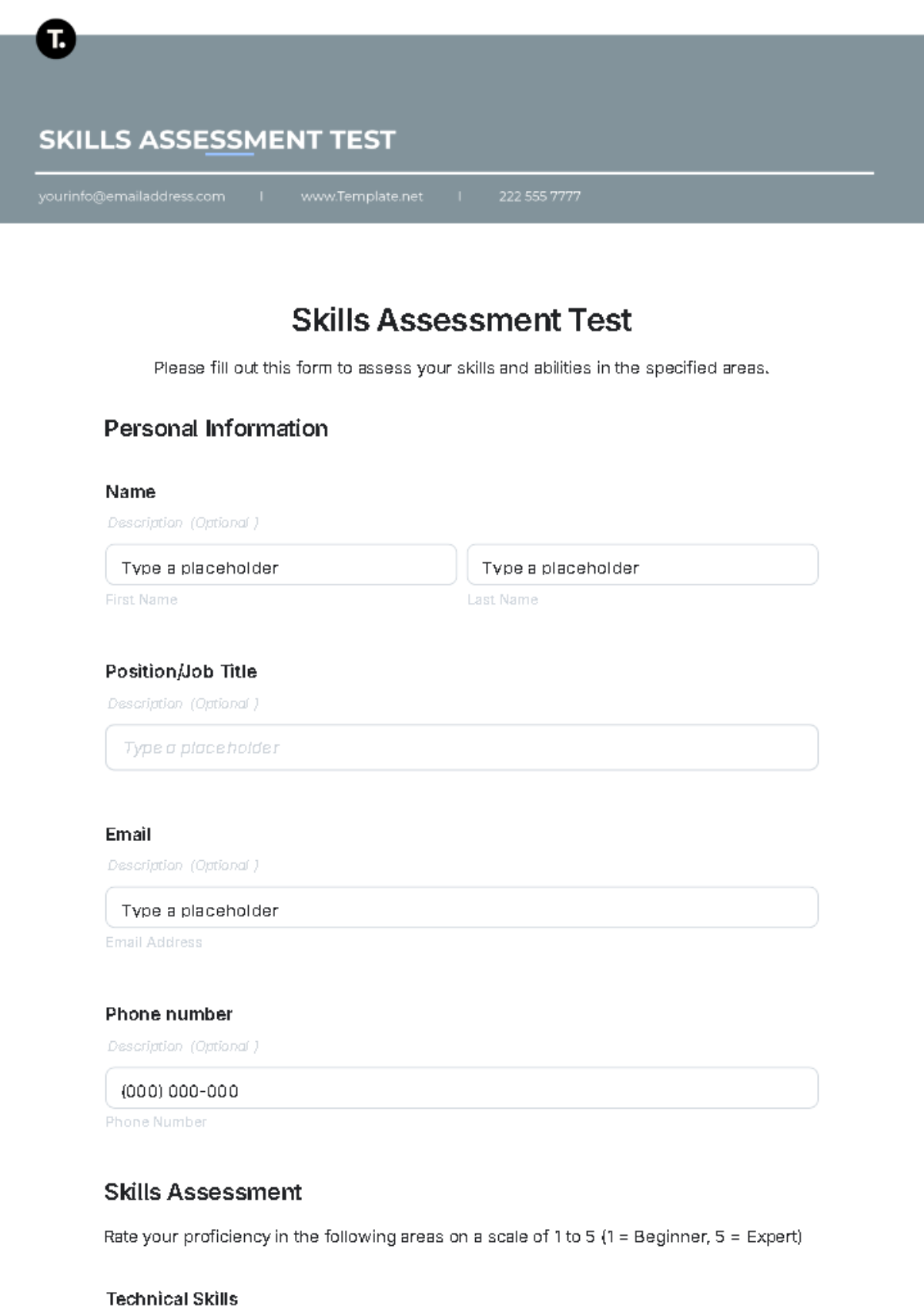Acceptance Test Plan
I. Overview
Project Name: [Project Name]
Prepared By: [Your Name]
Company: [Your Company Name]
Purpose: The purpose of this Acceptance Test Plan is to outline the criteria and standards for the acceptance of the [Project Name] project, ensuring that all functionalities and features meet stakeholder requirements.
II. Scope
Modules to be Tested:
User Management Module: This module includes functionalities related to user registration, login, and profile management.
Product Catalog Module: This module includes functionalities related to browsing and searching for products, as well as viewing detailed product information.
Order Management Module: This module includes functionalities related to placing orders, viewing order history, and managing order status.
Payment Gateway Module: This module includes functionalities related to processing payments securely.
Shipping Module: This module includes functionalities related to calculating shipping costs, selecting shipping methods, and tracking shipments.
Features to be Tested:
User Registration: Verify that users can register with valid information and receive a confirmation email.
Login: Verify that registered users can log in with their credentials.
Product Browsing: Verify that users can browse products by category and search for specific products.
Product Details: Verify that users can view detailed information about products, including images, descriptions, and prices.
Order Placement: Verify that users can add products to their cart and complete the checkout process.
Order History: Verify that users can view their order history and details of past orders.
Payment Processing: Verify that payments are processed securely using the selected payment method.
Shipping Calculation: Verify that shipping costs are calculated accurately based on the selected products and shipping address.
Shipping Tracking: Verify that users can track the status of their shipments using a tracking number.
III. Test Strategy
A. Test Levels
Unit Testing: Unit tests will be conducted to verify the functionality of individual components or modules.
Integration Testing: Integration tests will be performed to ensure that integrated components work together as expected.
System Testing: System tests will validate the entire system's compliance with functional and non-functional requirements.
Acceptance Testing: Acceptance tests will be conducted to verify that the system meets the stakeholders' requirements and is ready for deployment.
B. Test Types
Functional Testing: Functional tests will be conducted to verify that each function of the software application operates in accordance with the requirements.
Non-Functional Testing: Non-functional tests, including performance, security, and compatibility testing, will be performed to evaluate the system's performance under various conditions.
Usability Testing: Usability tests will be conducted to ensure that the system is user-friendly and meets the users' needs.
Performance Testing: Performance tests will be performed to assess the system's responsiveness, scalability, and stability under varying loads.
C. Test Approach
Risk-based Testing: Prioritize testing based on the identified risks to ensure that high-risk areas are thoroughly tested.
Incremental Testing: Test the system in increments to detect and fix defects early in the development process.
Regression Testing: Perform regression tests to ensure that new code changes do not adversely affect existing functionality.
Exploratory Testing: Conduct exploratory tests to uncover defects that may not be identified through scripted testing.
D. Test Tools
Automation Tools: Use automation tools such as Selenium WebDriver for functional testing and JMeter for performance testing to increase test coverage and efficiency.
Defect Tracking Tools: Use defect tracking tools such as JIRA to track and manage defects throughout the testing process.
Test Management Tools: Use test management tools such as TestRail to manage test cases, test plans, and test execution results.
E. Test Data
Test Data Management: Ensure that test data is relevant, accurate, and securely managed to support comprehensive testing.
Data Privacy: Ensure that sensitive data is protected and anonymized during testing to comply with data privacy regulations.
F. Test Documentation
Test Plan: This document will outline the overall test strategy, scope, and approach for the acceptance testing phase.
Test Cases: Detailed test cases will be created to verify the system's functionality against the specified requirements.
Test Reports: Test reports will be generated to summarize the test results, including defects found and their resolution status.
G. Exit Criteria
Test Coverage: Ensure that all critical functionalities are covered by test cases and have passed successfully.
Defect Resolution: Ensure that all critical and high-severity defects have been resolved or mitigated.
Stakeholder Approval: Obtain approval from stakeholders that the system meets the acceptance criteria and is ready for deployment.
This test strategy outlines the approach, tools, data, documentation, and exit criteria for the acceptance testing of the [Project Name] project.
IV. Test Environment
Hardware Requirements:
Processor: Intel Core i7 or equivalent
RAM: 16 GB
Hard Disk Space: 500 GB SSD
Network Requirements: High-speed internet connection
Software Requirements:
Operating System: Windows 10 Pro
Database: MySQL Server 8.0
Web Server: Apache Tomcat 9.0
Browser: Google Chrome, Mozilla Firefox, Microsoft Edge
Additional Tools:
Test Automation: Selenium WebDriver
Defect Tracking: JIRA
Test Management: TestRail
V. Acceptance Criteria
Requirements Coverage: Each requirement from the specifications document must be covered by at least one test case.
Performance Benchmarks: The system must handle 1000 concurrent users.
Usability Standards: The system should have a user satisfaction score of at least 80% in usability testing.
VI. Test Planning
A. Roles and Responsibilities
Test Lead: [Name] - Manages and oversees the testing process.
QA Engineer: [Name] - Executes test cases and reports defects.
Developer: [Name] - Fixes defects and provides updates.
Project Manager: [Name] - Ensures all criteria are met.
B. Test Schedule
Task | Start Date | End Date | Responsible Person | Remarks |
|---|---|---|---|---|
Test Case Preparation | May 2, 2050 | May 5, 2050 | [Name] | |
Test Execution | May 7, 2050 | May 10, 2050 | [Name] | |
Defect Reporting | May 12, 2050 | May 15, 2050 | [Name] | |
Test Report Compilation | May 16, 2050 | May 20, 2050 | [Name] |
VII. Test Cases
A. Test Case 1
Test Case ID: TC001
Objective: Verify that the login functionality works correctly.
Preconditions: User is registered.
Steps to Execute:
Navigate to the login page.
Enter valid username and password.
Click on the login button.
Expected Result: User is redirected to the dashboard.
B. Test Case 2
Test Case ID: TC002
Objective: Verify that the password reset functionality works correctly.
Preconditions: User has a registered email.
Steps to Execute:
Navigate to the password reset page.
Enter registered email.
Click on the reset password button.
Expected Result: Password reset email is sent to the user.
VIII. Defect Management
A. Defect Lifecycle
Defect Identification
Defect Reporting
Defect Triage
Defect Resolution
Defect Retesting
Defect Closure
B. Defect Reporting
Defect Logging Tool: JIRA
Defect Severity Levels:
Critical: System crash, data loss.
High: Major functionality is broken.
Medium: Minor functionality issue.
Low: Cosmetic issue.
IX. Metrics and Reporting
Test Execution Summary
Defect Summary Report
Test Coverage Report
Test Spend Analysis
X. Approvals
Name | Role | Signature | Date |
|---|---|---|---|
[Your Name] | QA Officer |
| May 1, 2050 |
[Stakeholder Name] | Project Manager |
| May 1, 2050 |
[Client Name] | Client |
| May 1, 2050 |
